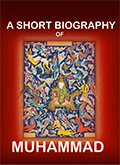The Feast of the Transfiguration and the Defeat of Islam

August 6, the Roman Catholic Church celebrates the Feast of the Transfiguration of Christ, when according to the gospels (Matthew 17:1–8, Mark 9:2–8, Luke 9:28–36): “And He [Jesus] was transfigured before them, and his face shone like the sun, and his garments became white as light.” Yet how many know that this feast day, which was originally celebrated in the Oriental Churches, was inserted into the Roman liturgical calendar by Pope Calixtus III in 1456 to commemorate the defeat agaisnt the Muslim Ottoman Turks by Christian forces at the Battle of Belgrade?
The Siege of Belgrade, as it was first called, occurred from July 4 to July 22, 1456. After the fall of Constantinople in 1453, the sultan Mehmed II had rallied his provisions in order to conquer the Christian Kingdom of Hungary – his immediate objective was the border fort of the town of Belgrade.
John Hunyadi, a Hungarian nobleman and warlord of Vlach lineage, who fought many battles against the Ottomans in the previous two decades, expected just such an attack.
The siege eventually escalated into a major battle, during which Hunyadi led a sudden counterattack that overran the Turkish camp, ultimately compelling the wounded Sultan Mehmet II to lift the siege and retreat.
At the end of 1455, after a public reconciliation with all his enemies, Hunyadi began preparations. At his own expense he provisioned and armed the fortress, and leaving in it a strong garrison under the command of his brother-in-law Mihály Szilágyi and his own eldest son László, he proceeded to form a relief army and a fleet of two hundred corvettes. As no other baron was willing to help (fearing Hunyadi’s growing power more than the Ottoman threat), he was left entirely to his own resources.
His one ally was the Franciscan friar, Giovanni da Capistrano, who preached a crusade so effectively that the peasants and yeomanry, ill-armed (most of them had only slings and scythes) but full of enthusiasm, flocked to the standard of Hunyadi, the kernel of whose host consisted of a small band of seasoned mercenaries and a few banderia of noble horsemen. All in all, Hunyadi could build a force of 25,000–30,000 men.
Despite Hunyadi’s orders to the defenders not to try to loot the Turkish positions, some of the units crept out from demolished ramparts, took up positions across from the Turkish line, and began harassing enemy soldiers. Turkish spahis (provincial cavalry) tried without success to disperse the harassing force. At once more Christians joined those outside the wall. What began as an isolated incident quickly escalated into a full-scale battle.
John of Capistrano at first tried to order his men back inside the walls, but soon found himself surrounded by about 2,000 Crusaders. He then began leading them toward the Ottoman lines, crying, “The Lord who made the beginning will take care of the finish!”
Capistrano led his crusaders to the Turkish rear army across the Sava river. At the same time, Hunyadi started a desperate charge out of the fort to take the cannon positions in the Turkish camp.
Under cover of darkness the Turks retreated in haste, bearing their wounded in 140 wagons. At the city of Sarona, the sultan regained consciousness. Upon learning that his army had been routed, most of his leaders killed and all his equipment abandoned, the 24-year-old ruler was barely prevented from committing suicide by taking poison. The surprise attacks caused heavy losses and much disarray. Thus, during the night a defeated Mehmed withdrew his remaining forces and returned to Constantinople.
During the siege, Pope Callixtus III ordered the noon bell, to call believers to pray for the defenders, but as in many places the news of victory arrived earlier than the order, it transformed into the commemoration of the victory, and the Pope modified his the order to fit this interpretation.
N. B. Primary sources used for this article: actualite-islam-musulmans.com, liturgicalnotes.blogspot.com, and New World Encyclopedia.
__________________________________________________

Mario Alexis Portella is a priest of the Cathedral of Santa Maria del Fiore and Chancellor of the Archdiocese of Florence, Italy. He has a doctorate in canon law and civil law from the Pontifical Lateran University in Rome; he also holds a M. A. in Medieval History from Fordham University, as well as a B.A. in Government & Politics from St. John’s University. He is also author of Islam: Religion of Peace? – The Violation of Natural Rights and Western Cover-Up.

Book available on Amazon, Barnes & Noble or WestBow Press.





Recent Comments